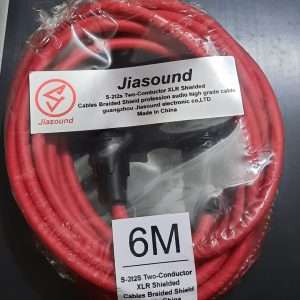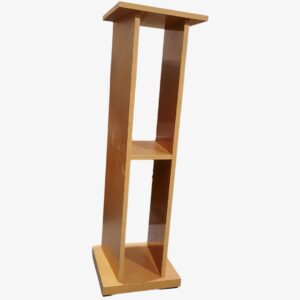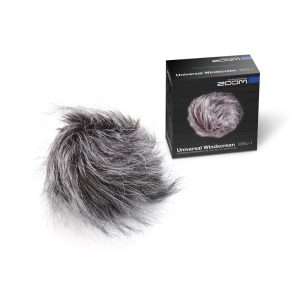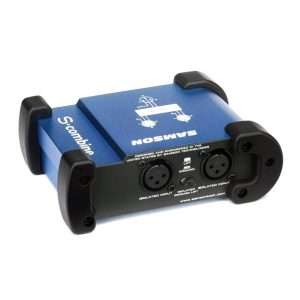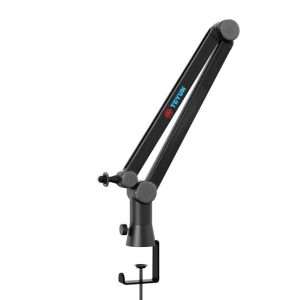Description
Studio monitor isolation pads are an essential, yet often overlooked, accessory for anyone with studio monitors, whether they are entry-level Behringer, mid-range Focal, or high-end Yamaha. They play a crucial role in improving the accuracy and clarity of your audio monitoring.
What are Studio Monitor Isolation Pads?
These are specialized pads, typically made from high-density acoustic foam, rubber, or sometimes more complex materials with internal structures, that are placed directly underneath your studio monitors.
What do they do? (The Science of Decoupling)
The primary purpose of isolation pads is to decouple your studio monitors from the surface they are resting on (desk, speaker stands, shelves, etc.). Here’s why this is so important:
- Reduce Vibration Transfer: When your studio monitors produce sound, especially low frequencies (bass), they generate vibrations. If the monitors are placed directly on a solid surface, these vibrations can transfer into the desk or stand.
- Prevent Resonances: Once vibrations transfer to the surface, the surface itself can start to vibrate and resonate. This unwanted resonance colors the sound, particularly in the bass and low-mid frequencies. It can make your bass sound boomy, muddy, or undefined, giving you a false impression of what’s happening in your mix.
- Improve Sonic Accuracy: By decoupling the monitors, the isolation pads absorb these vibrations, preventing them from transferring to the surface. This means you hear only the sound coming from the monitor’s drivers, not the sympathetic vibrations of your desk. The result is:
- Tighter, more accurate bass response: You hear the bass as it truly is, without artificial boosts or muddiness from your desk.
- Improved clarity and detail: The entire frequency spectrum becomes clearer, as unwanted resonances are removed.
- Better stereo imaging: With less smearing of frequencies, the stereo panorama becomes more defined and precise.
- Reduced listening fatigue: A cleaner sound is less tiring to listen to over long periods.
- Angle Adjustment: Most isolation pads come with removable wedges or a design that allows you to tilt the monitors upwards or downwards. This is vital for aiming the tweeters directly at your ears (forming an equilateral triangle with your head and the two monitors), which is the optimal listening position for accurate monitoring.
Types of Studio Monitor Isolation Pads:
- Acoustic Foam Pads:
- Description: The most common and affordable type. Made from high-density foam (e.g., polyurethane foam). Often come in two pieces per pad, allowing for flat, upward, or downward tilt.
- Pros: Very effective for their price, lightweight, easy to adjust angles.
- Cons: Can compress slightly over time with very heavy monitors, may not offer the absolute highest level of isolation compared to more advanced solutions.
- Brands: Auralex MoPads, Adam Hall, Generic foam pads (many local brands).
- Rubber/Sorbothane Pads or Feet:
- Description: Made from specialized rubber compounds like Sorbothane, which is highly effective at absorbing vibrations. Can be small feet or larger pads.
- Pros: Excellent vibration damping, very effective for coupling or decoupling depending on design.
- Cons: Can be pricier, may not offer angle adjustment (if they are just feet).
- Advanced Isolation Stands/Platforms:
- Description: These are more sophisticated solutions that use a combination of materials, sometimes including metal plates, specialized polymers, or unique suspension systems. Examples include IsoAcoustics stands or Auralex ProPADs/ProPod.
- Pros: Superior isolation, often provide precise height and tilt adjustments, can significantly improve sound.
- Cons: Significantly more expensive, can be bulkier.
Do you really need Isolation Pads?
In almost every scenario where your studio monitors are resting on a desk, shelf, or non-dedicated speaker stand, yes, you will benefit significantly from isolation pads. The difference can be subtle in some rooms but profound in others, especially if your desk or surface is prone to rattling or resonance. For the relatively low cost, they offer one of the best bangs for your buck in terms of improving your monitoring environment.














